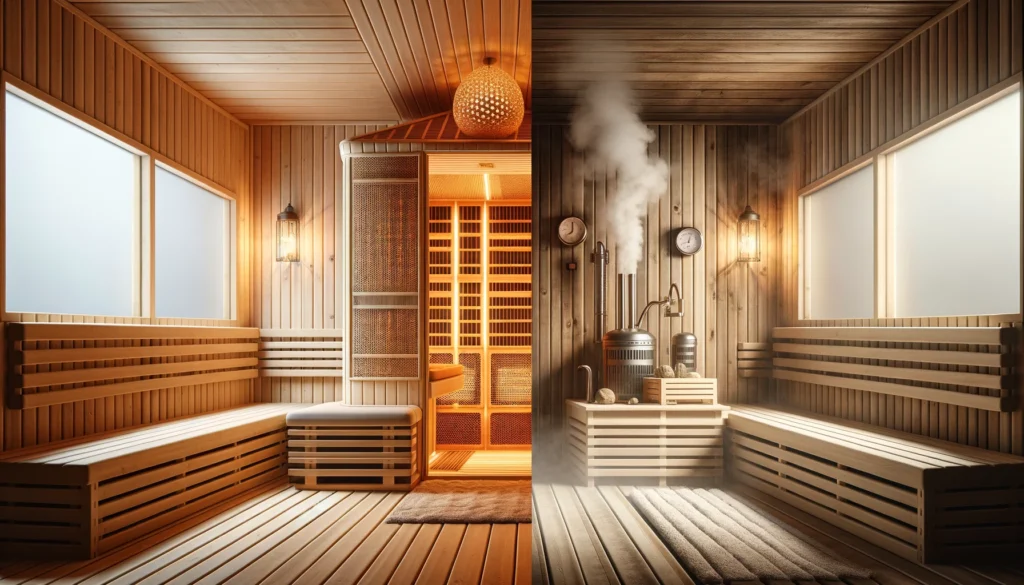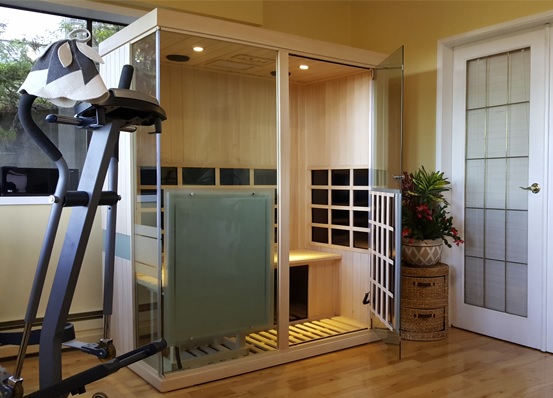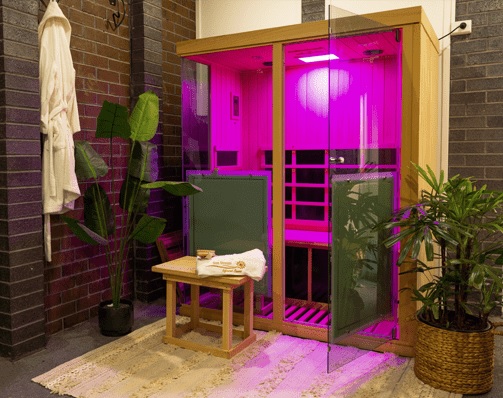
Infrared Sauna vs Steam Sauna – Which Is Better?
Buying a sauna for your home but not sure which is best for you? Before we get into the ongoing debate over infrared vs steam saunas, the question you should ask yourself is what are you looking to gain from your sauna experience? The answer lies in understanding your preferences and health and wellness goals.
Steam and infrared saunas may seem alike and both put up a compelling offer with a multitude of health and wellness benefits, ranging from stress reduction to improved circulation – but what’s the difference?
In this blog, we’ll take a closer look at the pros and cons of the two types of saunas — looking at everything from their advantages and heat methods to set up expenses, and how hassle-free they are to put together or install.
What is a Sauna?
Simply put, a sauna is a small room or space designed to provide dry or moist heat sessions, typically for relaxation, health and wellness purposes. Saunas have been around for a long time and are found in various cultures around the world, the two main types being dry saunas and steam saunas.
While both infrared and steam saunas share some of the same core benefits, such as detoxification and relaxation that can result in improved sleep, they differ in others. Here we will look at how each individual sauna works and what benefits and experience they can provide.
The Infrared Advantage – How Does an Infrared Sauna Work?
Infrared saunas operate by emitting radiant heat that directly penetrates the body. This unique approach induces a deep, detoxifying sweat at lower temperatures, compared to traditional steam saunas.

Infrared saunas benefits include:
- Anti-aging: A classic use of infrared light is to help increase collagen production in the skin and reduce scarring.
- Pain Relief: Infrared heat can help alleviate muscle and joint pain by increasing blood circulation and promoting tissue repair, making this a popular choice for individuals dealing with conditions such as arthritis, fibromyalgia or sports injuries.
- Weight Loss Support: While not a direct substitute for exercise and a healthy diet, the increased heart rate and sweating in an infrared sauna session can contribute to calorie burning and water weight loss.
- Improved Cardiovascular Function: Studies suggest that regular use of infrared saunas improves blood circulation and reduces the risk of cardiovascular diseases.
The Steam Sauna Experience – How Does a Steam Sauna Work?
On the flipside, steam saunas are hot and humid. The traditional approach involves pouring water over hot stones to create steam, fostering a moist environment, increasing humidity levels and engulfing you in a cloud of steam.
Steam sauna benefits include:
- Respiratory Health: Steam saunas are known for their ability to open airways, ease congestion, and provide relief. Inhaling the warm, moist air in a steam sauna can be beneficial for respiratory health making them a popular choice for individuals with respiratory conditions such as asthma or allergies.
- Skin Cleansing: Whilst steam saunas don’t provide much of a benefit when it comes to increasing collagen production in the skin, the moist heat in a steam sauna can open up pores and help cleanse and hydrate the skin. This can lead to a healthy complexion and can be beneficial for individuals with acne, eczema or other skin conditions.
What’s the Difference?
The main points of difference between the two really come down to their heating method, how that heat is distributed and penetrates the skin, along with the overall experience they offer.
Infrared Sauna Heating

Type of Heat: Infrared saunas use infrared heaters to emit radiant heat. These heaters produce invisible light that is absorbed directly by the body, warming the skin and tissues beneath without significantly heating the surrounding air.
Heat Penetration: Penetrates deeper into the skin, heating the body from the inside out. This can lead to a more profound sweat.
Temperature Range: Average temperatures range between 46-57 degrees celsius.
Steam Sauna Heating
Type of Heat: Steam saunas use a humidifying steam generator to produce moist heat. This involves heating water to create steam, which is then released into the air in the sauna room.
Heat Penetration: Heats the surface of the skin, resulting in a more external and superficial sweat. The heat doesn’t penetrate as deeply into the body as an infrared would.
Temperature Range: Average temperatures range between 30-50 degrees celsius.
It’s also worth noting that steam saunas can become a breeding ground for bacteria and mould if not properly maintained and will therefore require more cleaning than that of the infrared sauna.
Costs & Set Up
It’s important to consider your budget when choosing between steam saunas and infrared saunas, but you might be surprised at how affordable infrared saunas are to run in the UK.
Traditional steam saunas typically incur 2-3 times higher electricity charges than their infrared counterparts. They also demand a greater initial investment due to specialised equipment necessary for steam generation and control.
Moreover, the installation of steam saunas is more intricate, often requiring the construction of a dedicated room with proper ventilation. This complexity can result in higher installation costs, potentially necessitating professional assistance.
On the other hand, infrared saunas generally have more affordable setup costs. Available in various sizes and configurations, their prices can vary. Furthermore, many infrared saunas are designed for easy assembly and can be installed in existing spaces, such as spare rooms or basements, without major modifications. This stands in contrast to steam rooms, which often require constructing a dedicated room with proper ventilation.
Which is Better?
In the infrared vs steam sauna debate, there’s no one-size-fits-all answer. Your decision should align with your personal preferences, health objectives, and the experience you seek. Whether you’re drawn to the direct warmth of infrared or want to work up a sweat in the steam, both saunas offer a relaxing and rejuvenating encounter.
If you’re looking for a sauna that can help boost skin health, improve circulation, and relieve pain, infrared might be your best option. Steam saunas might be better suited to your needs if you’re looking for a sauna that can primarily help with respiratory health.
Ultimately, the decision should be based on personal needs and priorities, with an understanding of the distinct advantages each type of sauna offers and the costs associated with each.
Our Infrared Saunas
At Sun Stream Saunas UK, we offer a variety of infrared saunas that you can use at home – get in touch with us today to find out more!
